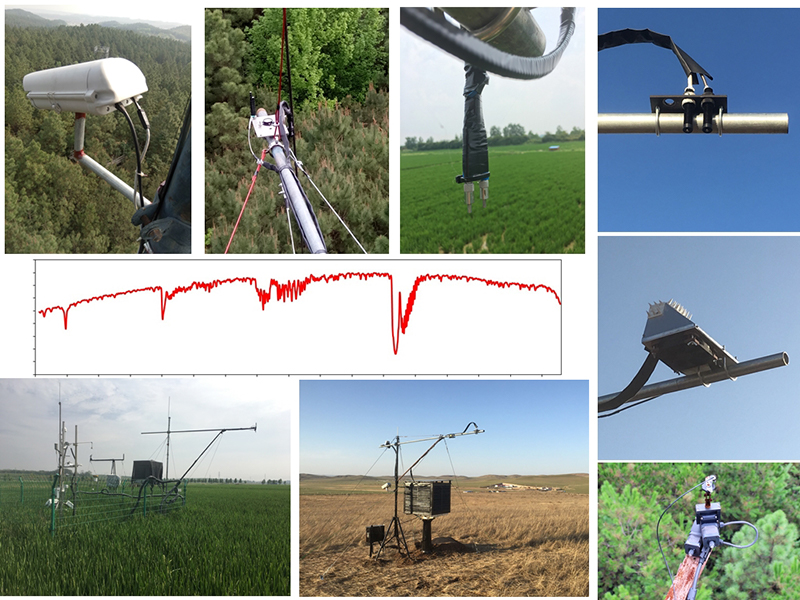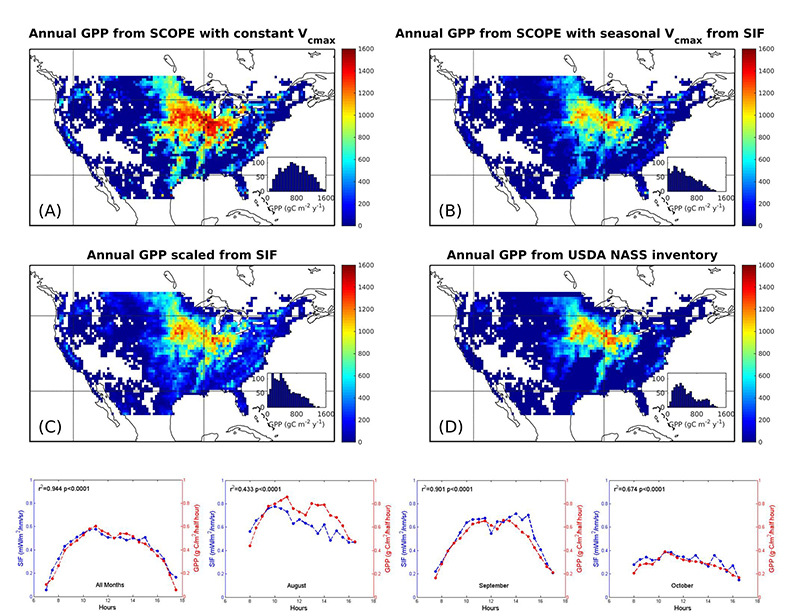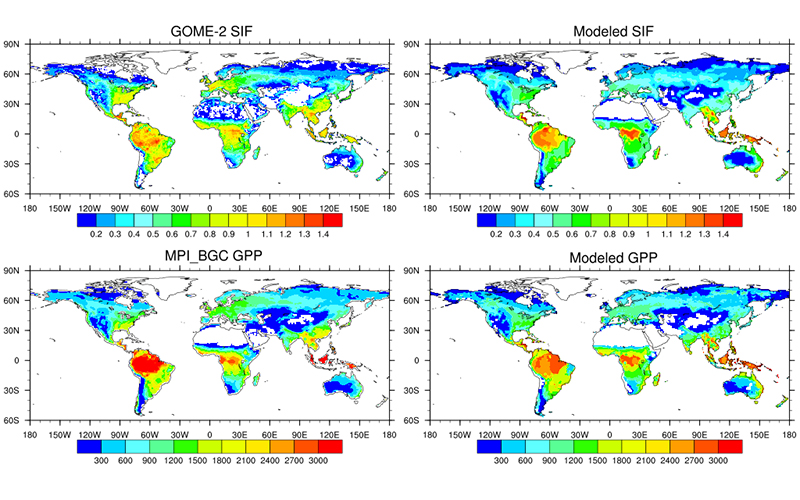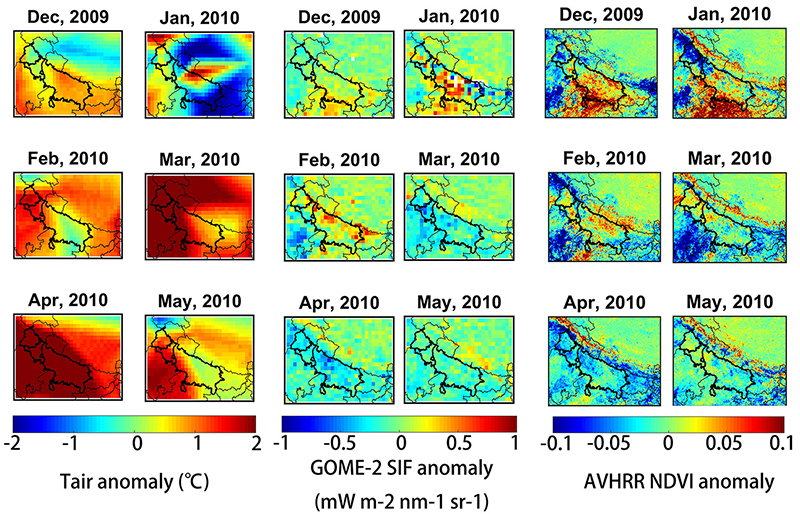1. ChinaSpec: a remote sensing network for terrestrial ecosystem

Remote sensing is a useful tool to upscale ground observations conducted at the ecosystem level such as the eddy covariance (EC) measurements, to the landscape and global scales. However, there is scale mismatch between EC observations and the much coarser satellite-derived data. To fill this gap, we are setting up a ground remote sensing network of in situ spectral measurements based on EC flux sites at a diverse ecosystem across the mainland of China. At each site, sun-induced chlorophyll fluorescence, hyperspectral sensors and camera are deployed to conduct long-term observations. To build ChinsSpec, we are collaborated with Prof. Shaoqiang Wang in the Institute of Geographic Sciences and Natural Resources Research (IGSNRR), Prof. Liangyun Liu in the Institute of Remote Sensing and Digital Earth (RADI), CAS, etc.
2. Remote sensing of chlorophyll fluorescence for vegetation photosynthesis
Recent development of sun-induced fluorescence (SIF) offers new possibilities to monitor photosynthesis from space. We are using ground and satellite measurements of top-of-canopy fluorescence data to quantify spatio-temporal dynamics of vegetation photosynthetic efficiency. We are focusing on two main questions: (1) how can we link top-of-canopy fluorescence measurements to vegetation photosynthesis at multiple spatial and temporal scales; (2) whether we can derive some key biochemical parameters such as photosynthetic capacity from fluorescence data to improve modeling of gross primary production.
3. Coupling chlorophyll fluorescence model into terrestrial biosphere model for carbon cycle research

Satellite-derived SIF observations provide the new opportunity to monitor the global carbon cycle. To understand the mechanistic processes, we are integrating satellite SIF observations into terrestrial biosphere model to improve the model parameterization as well as to evaluate the simulations of fluorescence. For the purpose of model intercomparison and potential future use in assimilating satellite data, we collaborate with Prof. Jingming Chen in University of Toronto and Prof. Yongkang Xue in University of California, Los Angeles to incorporate satellite chlorophyll fluorescence into global terrestrial biosphere model for improving the estimated terrestrial carbon cycle. We use these models to study the relationships of water and carbon cycles and also to quantify climate change impact on gross primary production.
4. Applications of the new measurements of fluorescence data
Extreme climatic events such as drought, heat waves have significant impacts on the function of terrestrial ecosystem and thus carbon cycle. One main question to be answered by this research: when and where the fluorescence observations can provide a better monitoring for stress detection than the widely-used remote-sensed data sets such as vegetation indices. We are evaluating the potential of the ground and satellite measurements of fluorescence data for the early-warning of the response of vegetation to drought and heat stress. The other key research area is whether we can improve the modeling the vegetation transpiration from fluorescence observations through the link between photosynthesis and stomatal conductance.
